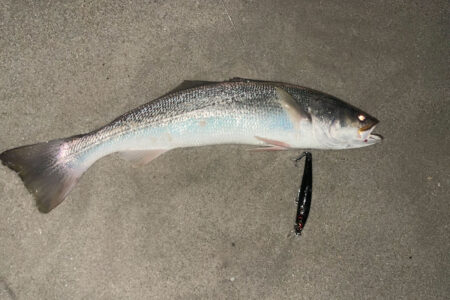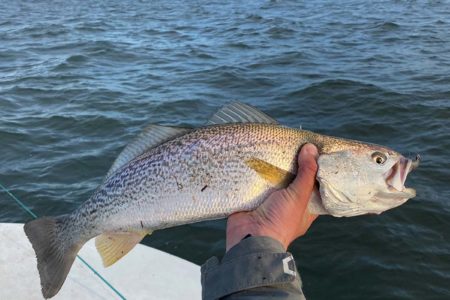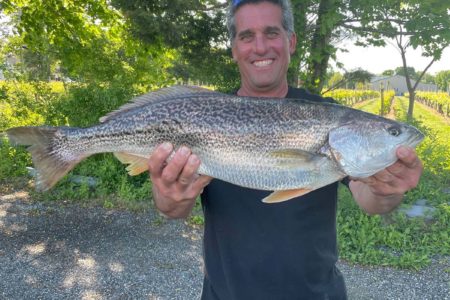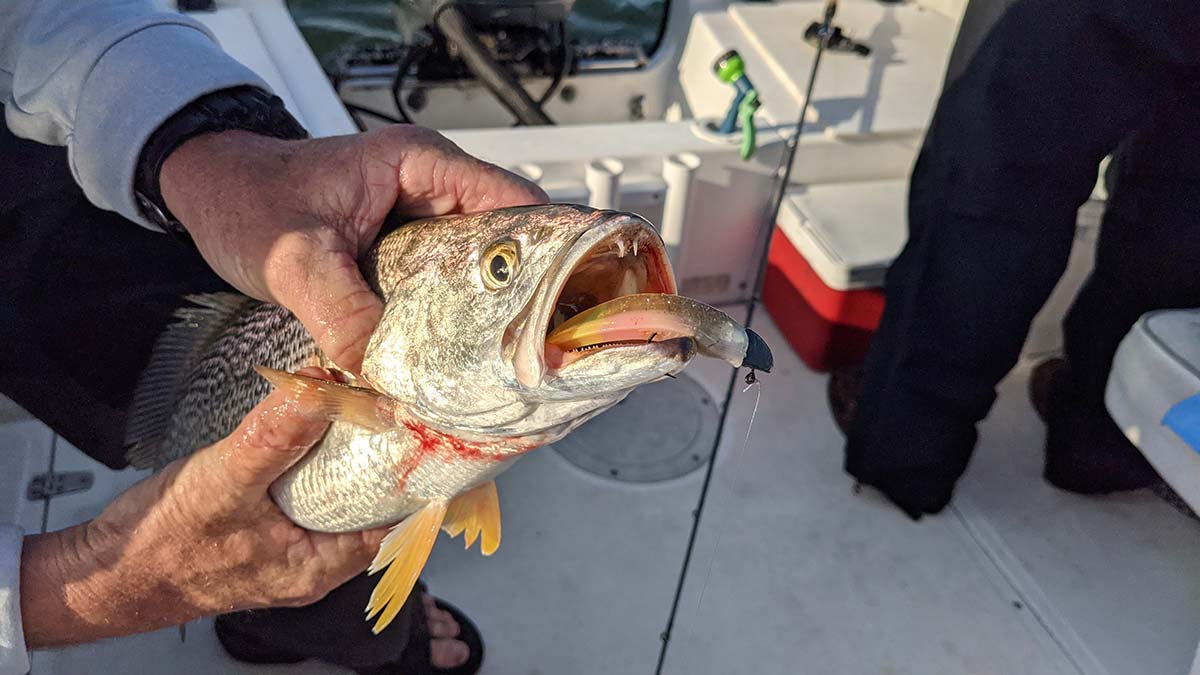
Weakfish haunts are not secrets, but certain areas produce better and with a higher quality of fish than others.
Dial the time clock back to the early 70s, and anglers will remember the great weakfish runs in Great South Bay and other parts of Long Island. At that time, I was a mere 15 years old and fished Great South Bay with one of The Fisherman’s original editors, Scott Simons. Scott had a knack for finding quality fish wherever he fished. Whether it was jumbo porgies and chopper bluefish off the South Side of Montauk, huge winter flounder on the South Shore, or big blackfish on the North Shore, Scott was constantly honed in on the action. Great South Bay was no different, and I can remember countless early a.m. ventures with him scoring on weakfish to 15 plus pounds using nothing more than the old stand-by — Salty Dog jig.
Fast forward to today, and although those monster “tiderunners” of years past are few and far between, Great South Bay still boasts a solid weakfish presence and a fishery that lasts through the spring, into the summer, and the fall. The quantity of weakfish has rebounded nicely in the last five-plus years to the point where anglers will actively target them, especially in the spring.
Make no mistake, weakfish do not just roam Great South Bay in its entirety and can be caught at will no matter where you fish. Weakfish haunts are not secrets, but certain areas produce better and with a higher quality of fish than others.
Everyone and his brother owns high-quality GPS and tracking info through their electronics, but finding solid weakfish haunts unless someone tells you where to go can be best achieved through a good-quality chart. Are Capt. Segull charts coming to mind? Well, they should because they are well worth it!
Weakfish are predators just like bass, blues, and fluke but are definitely much more timid and affected by boat traffic, angler noise, and other factors. You may have read about it in the reports section of the magazine. “Weakfish action was good this past week, but it is definitely an early a.m. adventure before the traffic gets out there.” The bottom line is that weakfish are the “chickens” where the fishing world comes into play.
All of this plays into where you plan to target them and on what stage of the tide. For me, the key to weakfish action is moving water. I do not care if it is incoming or outgoing as long as the water is moving. Weakfish will hold up in holes, channels, flats, and the mouths of creeks, waiting for an easy meal.
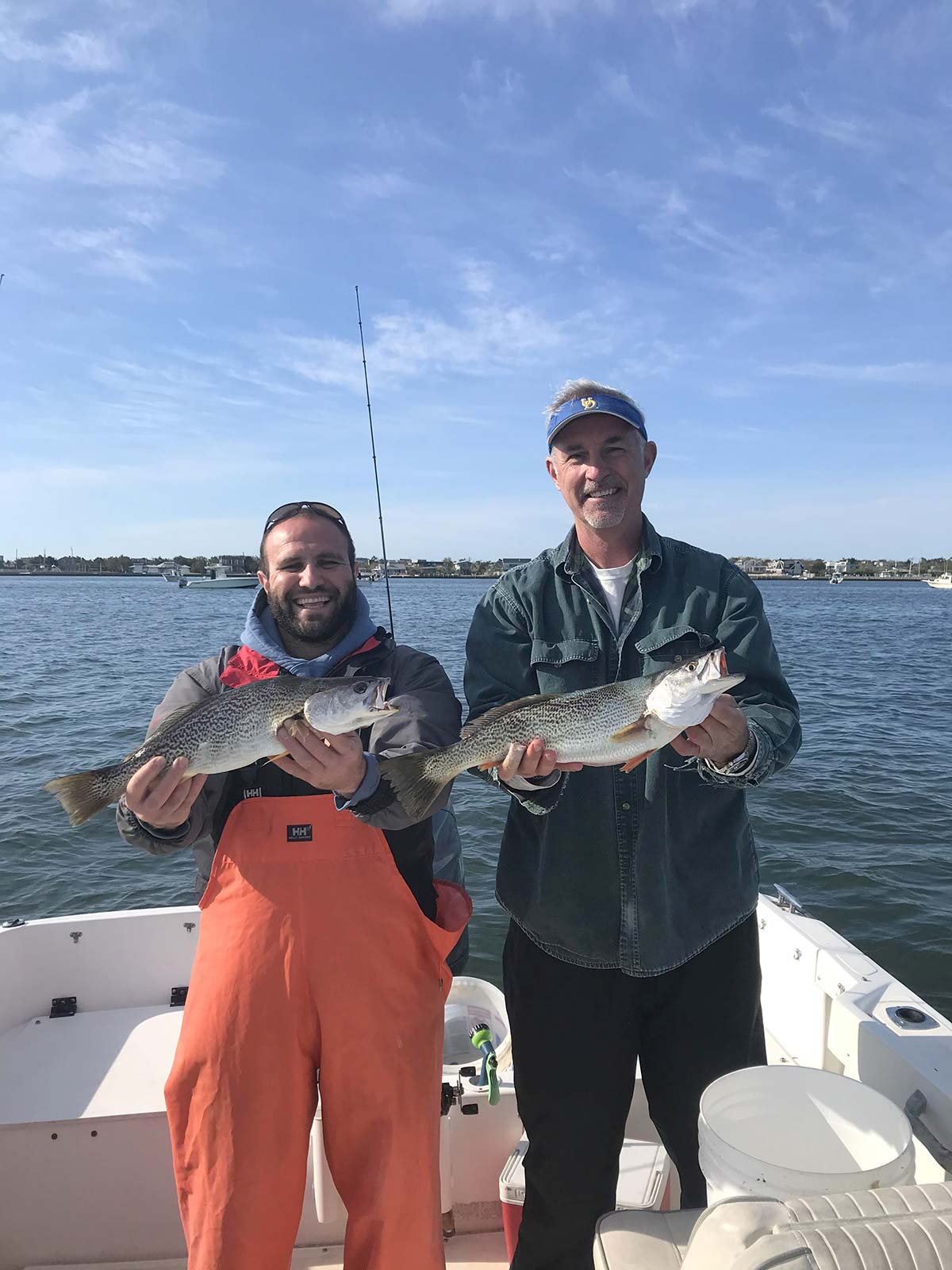
Location, Location, Location
Throughout Great South Bay are holes and depressions on both the north and south sides. In front of Heckscher State Park are flats holding fish every spring. I have found most of these fish to be on the “just” keeper to 20-inch class. There is a 10-foot hole just off Nicoll Point that always holds fish. Before heading west, West Channel is another good area. Staying on the north side of the bay, the Copiague Hole and any surrounding depression of 5 feet or more are other hot spots.
If you cross over to the bay’s south side, it is no secret that the entire area covering East and Range channels, from Ocean Bay Park to Atlantique, will always see early season action. In fact, this is one area where I have had weakfish in solid numbers and fish over the keeper range to 10 pounds in recent years. The 4 and 5 buoys in Dickerson are good, but this is definitely an early a.m. affair before boats start heading towards the inlet.
These are just a few of the normal spots anglers can find weakfish in Great South Bay, but I encourage you to move around and find your own hot spot. Look for an area where the channel drops off quickly or a hole between sand bars. If there is moving water, weakfish will set up.
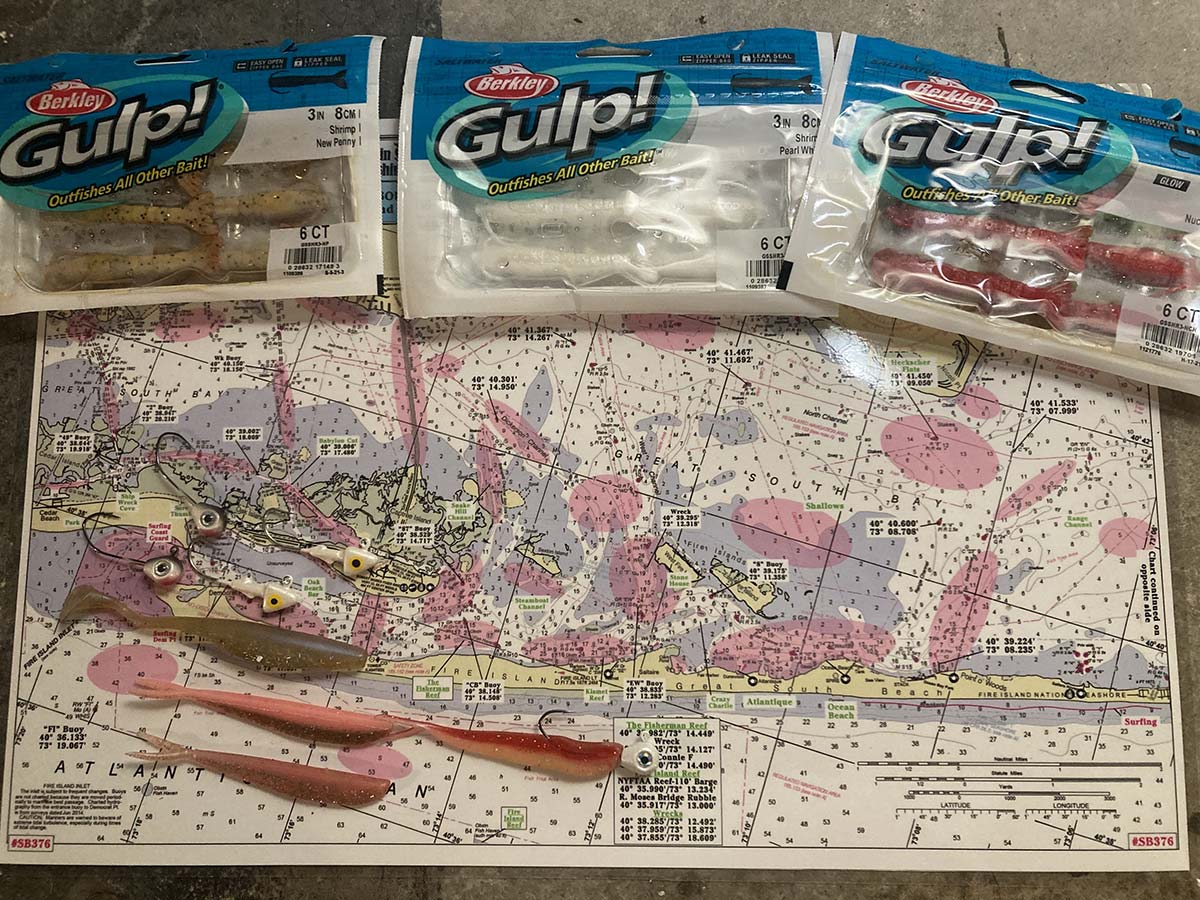
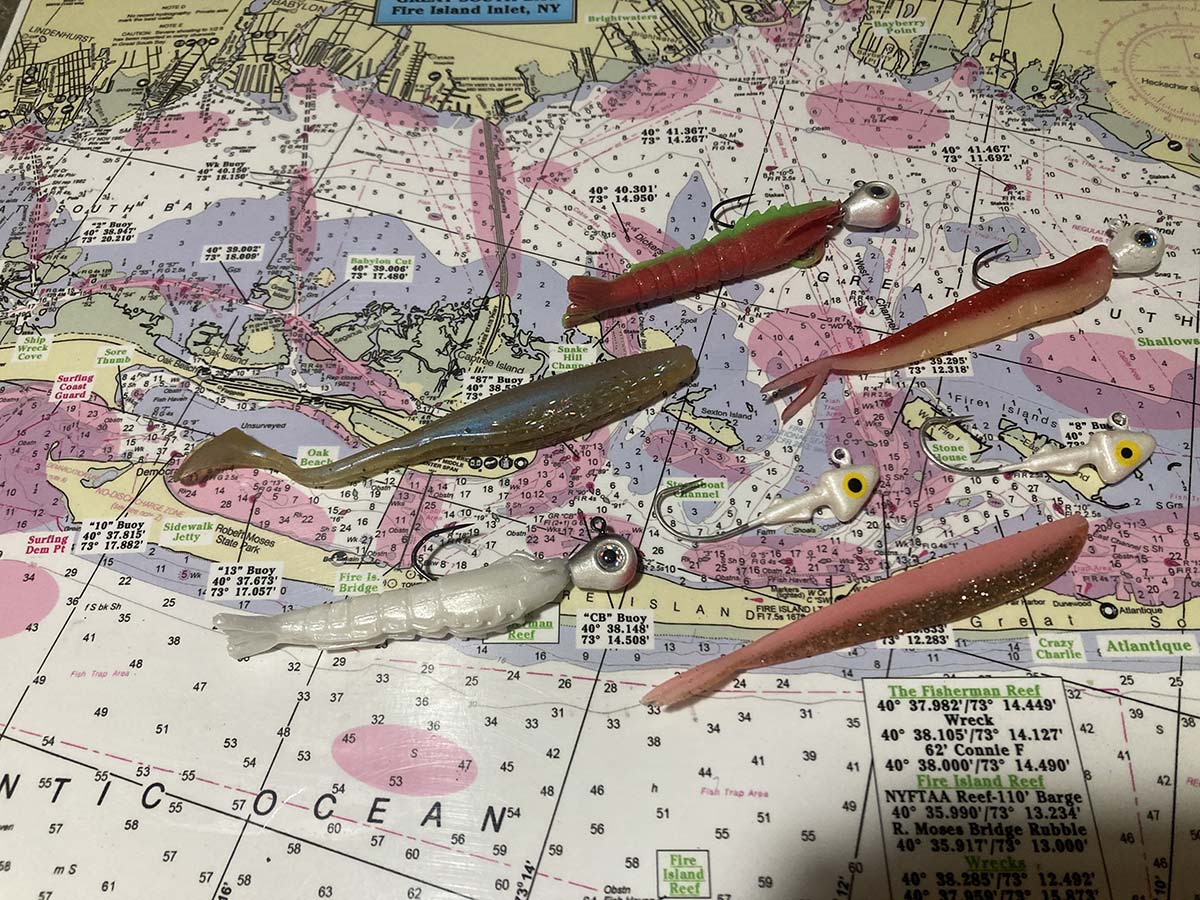
Tackle Tips
I cannot remember when the last time I saw an old Salty Dog was, but today there is a plethora of jigs on the market, all of which will catch weakfish. The K.I.S.S. method of “keep it simple, stupid” is best when targeting weakfish. They’re on small baitfish, so a simple jig is best.
I have used small Ava jigs tipped with live sandworms and small Fin-S Fish in pink, orange, and pearl. The Berkley Gulp Saltwater Shrimp will surely get bit. I like the new penny, nuclear chicken, and pearl white colors. I fish all of the soft plastics on 1/4 to 1/2-ounce jigheads. Another great bait and one that is easy to get is grass shrimp. These tasty critters will really get weakfish on the prowl. A simple burlap bag hung overnight at the local dock will usually get you a bucketful. You can either use these as hook baits or simply use them to chum the area you are fishing, then use soft plastics or sand worms.
For action, scope out the area you want to fish and either drift towards it or, if you are fortunate enough to own a Minn Kota trolling motor, slowly approach the area against the moving tide. Either way, make long casts to your hot spot, allowing the jig to hit bottom, then apply a jig and retrieve method. A lot of times, the jig will get hit on the fall, so pay attention to your line.
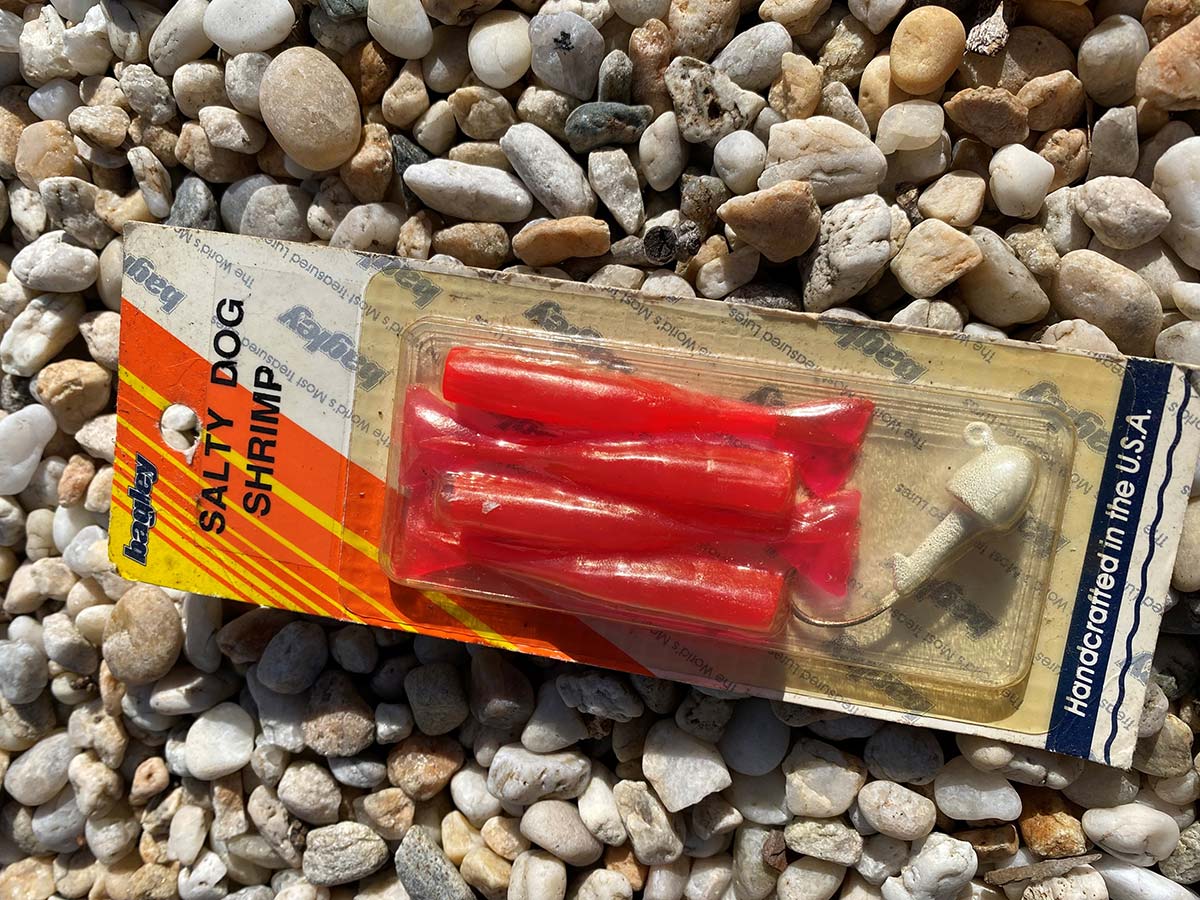
Ideal Weakfish Combo
You do not need heavy, stout tackle for weakfish. You can use a light action spinning rod in the 7 to 7-foot, 6-inch class, rated for 10 to 17 pounds with a fast taper, matched to a size 3000-4000 spinning reel with a smooth drag. On the line end, I use 10-pound test fluorocarbon line. The fluoro sinks and is invisible, which bodes well for finicky weakfish. The fluorocarbon will also give you a little cushion while fighting the fish due to stretch. I avoid using braid as I feel the lack of stretch will have you popping hooks easily due to the weak mouth of a weakfish.
Spring is here, and I believe with water and air temperatures a lot warmer than in years past, we could see solid weakfish action earlier this year than in the past. Get your gear ready, grab some soft plastics, sand worms, and grass shrimp, then hit the weakfish grounds of your choice. I feel 2023 could be another really good year, and who knows, maybe some 12-plus pound true “tiderunners” will appear.

